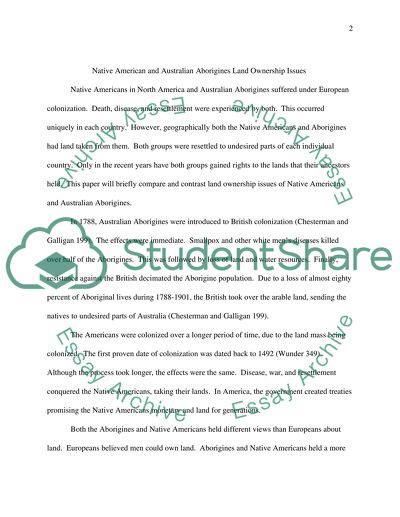Native American Topic: Geographic Evolution in N. America, Compare & Essay. Retrieved from https://studentshare.org/miscellaneous/1543863-native-american-topic-geographic-evolution-in-n-america-compare-contrast-with-australian-aborigines-land-ownership-issues
Native American Topic: Geographic Evolution in N. America, Compare & Essay. https://studentshare.org/miscellaneous/1543863-native-american-topic-geographic-evolution-in-n-america-compare-contrast-with-australian-aborigines-land-ownership-issues.


